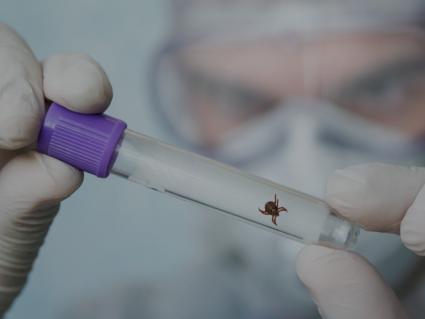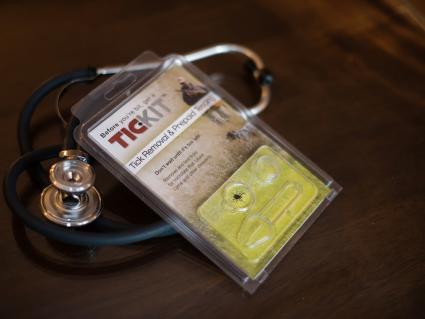Lyme Testing: What Should You Know?

Testing for a Lyme infection can be challenging. The primary test used is an antibody test; the presence of antibodies is an immune system response and therefore confirms exposure to the bacteria. However, the test is not great at determining the date of the exposure. We can only know the date of exposure if there was a known tick bite and symptoms develop. Direct methods of testing for Lyme, such as PCR testing, exist but are not very sensitive. A negative PCR test does not mean that an infection does not exist…
What if You Test Positive on an Antibody Screen Test?
The antibody test is a 2 part test. The first part, often referred to as a screen test, is called the ELISA test. This tests for the presence of any antibodies (IgM and/or IgG) towards Lyme. If the test is positive, then a confirmatory western blot testwill be run to look at all the antibodies in more detail. The numbers on the western blot correlate to antibodies made to different parts or proteins of Lyme. For example, band 23 correlates to an antibody produced to outer surface protein (Osp) C. Since this protein is highly specific to Lyme then antibody presence on a test is highly likely for Lyme exposure. There is further confirmation of exposure with the presence of other specific Lyme antibodies such as 39, 41, and 93.
What Does an “Absent” Result Mean?
Even though the western blot is considered the confirmatory test for Lyme, there are still limitations. The test uses a specific strain of Borrelia bacteria antigen that is sensitive to Borrelia burgdorferi species but are not sensitive to other species including Tick Borne Relapsing Fever (TBRF) species of Borrelia. Antibody thresholds are set relatively high, and results are given as “absent” or “present”. But an “absent” result does not necessarily mean no antibodies. It is best to get western blot testing that is quantitative. This means that the actual level or number of antibodies produced are shown in the results and not just given as a “absent” or “present”. There are two antibodies that are not in the standard western blot that correlate to bands 31(Osp A) and 34 (Osp B). These two antibodies were used in the past for vaccination.
Are Lyme Vaccinations Coming Our Way?
Currently there is a new monoclonal antibody vaccine in development and starting clinical trials. This monoclonal antibody correlates to band 31. Out of all the antibodies against Lyme that were investigated, the antibody to Osp A was found to be the most lethal towards Lyme1,2. The vaccine is designed for prophylaxis and prevention as the antibody is strong enough to kill the bacteria within the tick while it is attached. Therefore, the presence of this antibody could be important in determining a more complete immune response towards resolving the infection.
What About Co-Infections?
When ticks feed on small mammals, they not only acquire Lyme bacteria, but also acquire other microorganisms. Sometimes referred to as “co-infections” we prefer a more accurate term Tick-Borne Illness. It is true that it may be difficult to get another infection without acquiring Lyme, but it is possible. Each of these infections are caused by very different types of microorganisms than that of the spirochetal Lyme bacteria and therefore require different tests and sometimes different treatment.
Babesiosis is a parasitic infection transmitted by deer ticks. It infects red blood cells and can lead to anemia. Symptoms include fever, headache, sweats, and shortness of breath. Treatment requires anti-parasitic medication.
The rickettsia bacteria group include Anaplasmosis, Ehrlichiosis, and Rocky Mountain Spotted Fever. They can be passed by ticks but also by other ectoparasites such as fleas, lice, and mites (chiggers). Symptoms often develop quickly and often include high fever, severe headache, fatigue, joint pain, and rash. These bacteria are highly susceptible to tetracycline antibiotics.
Bartonella infections, also known as Cat Scratch Disease, can be acquired from cat scratches and bites, ticks and ectoparasites such as fleas, lice, and sand flies. Symptoms include streaky rash, swollen lymph nodes, fever, joint pain and fatigue. Bartonella is a bacterial infection and is susceptible to antibiotics.
There are other tick-borne infections that can be acquired across the U.S. and worldwide. Ticks can pass bacterial, parasitic, and viral infections. If having symptoms, it is important to test for which microorganism, Lyme or other tick-borne illnesses, that could be causing the symptoms so that an appropriate treatment can be given.
References
1. J Infect Dis. 2019 Apr 1; 219(7): 1146–1150.
Published online 2018 Nov 21. doi: 10.1093/infdis/jiy627
Anti-OspA DNA-Encoded Monoclonal Antibody Prevents Transmission of Spirochetes in Tick Challenge Providing Sterilizing Immunity in Mice
Yang Wang,1 Rianne Esquivel,2 Seleeke Flingai,2 Zachary A Schiller,1 Aurélie Kern,3 Sangya Agarwal,2 Jacqueline Chu,2 Ami Patel,2 Katherine Sullivan,1 Megan C Wise,4 Kate E Broderick,4 Linden Hu,3 David B Weiner,2 and Mark S Klempner1
2. https://n-magazine.com/big-sho...
3. https://wwwnc.cdc.gov/travel/yellowbook/2020/travel-related-infectious-diseases/rickettsial-including-spotted-fever-and-typhus-fever-rickettsioses-scrub-typhus-anaplasmosis-and-ehr
4. https://www.cdc.gov/parasites/...
5. https://www.cdc.gov/bartonella...
6. https://www.cdc.gov/ticks/dise...
Related Blog Posts

Acupuncture for Relief from Lyme and TBD’s
Using acupuncture for symptom relief from Lyme and other TBD's.Read the Post

An Interview with Dr. Stram: How Effective are the Current Conventional Treatments for Lyme Disease?
In this interview, we asked the founder of the Stram Center, Dr. Ronald Stram, how effective current antibiotic protocols are in regard to Lyme disease treatment. Dr. Stram has devoted his career to those suffering from chronic illnesses, specifically tick-borne diseases. Since 2003, the Stram Center has served nearly 10,000 patients suffering from Lyme disease all across the globe. Dr. Stram…Read the Post
Related Services

Lyme Disease
Lyme Disease Diagnosis and Treatment in Delmar NY and Burlington VT offices At the Stram Center we vow to continue our education on Lyme Disease research, stay up to date on the most effective testing and all the safe available therapies. Moreover, our years of experience in treating patients according to the whole person-integrative medicine approach allows us the most effective way to care…Lyme Disease





















